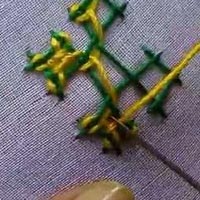 An exhibition on embroidered kanchalis with exquisite chaniya cholis and dupattas of Kutch is being held at CP Art Centre in Chennai. The event will continue till August 27.
An exhibition on embroidered kanchalis with exquisite chaniya cholis and dupattas of Kutch is being held at CP Art Centre in Chennai. The event will continue till August 27.
In the late 1960s when Kutch experienced a severe drought, Chandaben Shroff travelled to the famine-struck region on a relief project. That’s when she saw the exquisite embroidery done by the women there, to help the craftswomen of Kutch.
Chandaben adopted a village, and 30 of its craftswomen started Ahir embroidery. The women there used cotton thread but the colour bleeds so they began buying silk. Today, Shrujan, an NGO set by Chandaben gives work to 3,000 women in 120 villages in Kutch. They make kurtas, blouse pieces, cholis, sarees, dupattas and bags, all covered in beautiful embroidery. It is sold all over India through exhibitions, though they also have four shops — two in Mumbai, one in Ahmedabad, and another in Kutch. They work with 12 communities doing 16 different kinds of embroidery.
The embroidery of Kutch is a legacy, each tribal group and community in the area has its own particular style of embroidery. The Harijan community that came from Pakistan in 1972 specialises in Soof and Khaarek embroidery. In Soof, they count the threads and do the embroidery on the back of the cloth, and it always has geometrical designs, which is done from the corners of the cloth. Khaarek is done in the same style, but the work is done from the centre to the sides.
The work is painstaking. It takes craftswomen about five months to embroider a choli, and nine months to fashion the heavy chaniya cholis. The Muslim community can do five types of embroidery — Chopad, Gotaav, Katari, Mukko and Mutwa Pakko — in one product, and that takes almost one year to do the full set, embroidery designer Datta Sawant said.














